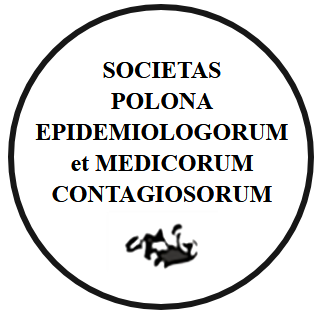ABSTRACT
BACKGROUND. Health promoting behaviours have a decisive effect on the development and cours of caries at any age.
OBJECTIVES. The aim of the study was to investigate the correlation between health promoting behaviours and the state of dentition in children aged 1-3 years by determining the child’s age, the cause of the first visit at the dental office and evaluating the relationship between the intensity of dental caries and the frequency of oral hygiene practices as well as the consumption of sweet foods.
MATERIAL AND METHODS. The study was conducted among 204 children aged 1-3 years from the town of Skierniewice and its vicinity, who visited the Dental Clinic at the Ogrodowa Medical Centre in Skierniewice in the years 2019 and 2020. The study consisted of two parts: a questionnaire and clinical examination.
RESULTS. In the entire study group, active caries was found in 65.2% of children. Most of the children came for the first time to the dentist at the age of 3 years (37.5%), and the least number of them in the first year of age (22.6%). There was no significant correlation observed between the purpose of the visit (adaptation, check-up and treatment, pain) and the child’s age (p> 0.05). The majority of children (67.6%) cleaned their teeth twice a day; and the value of their dmf index (2.00 ± 0.88) was significantly lower compared to those brushing teeth once a day: in the morning (2.82 ± 1.01) or in the evening (2.89 ± 0.93) (p <0.001). Only 8.8% of children did not eat sweets at all, while more than half (58.8%) consumed them more than once a day. The dmf index value significantly (p<0.001) increased with the frequency of sweets consumption from 0.37 ± 0.08 - never, through 1.73 ± 0.86 - once a day, to 2.99 ± 1.03 - often.
CONCLUSIONS. The results of our study showed that health-promoting measures have a significant impact on the dental state of children aged 1-3 years.
STRESZCZENIE
WSTĘP. Decydujący wpływ na rozwój i przebieg próchnicy w każdym wieku mają zachowania prozdrowotne.
CEL. Celem pracy było zbadanie korelacji między nawykami prozdrowotnymi, a stanem uzębienia dzieci w wieku od 1-3 lat przez określenie wieku dziecka i przyczyny zgłoszenia się na pierwszą wizytę do stomatologa oraz ocenę zależności między intensywnością próchnicy a częstością zabiegów higienicznych i spożywaniem słodkich pokarmów.
MATERIAŁ I METODY. Badanie przeprowadzono wśród 204 dzieci w wieku od 1-3 lat ze Skierniewic i okolic, które zgłosiły się do Poradni Stomatologicznej przy Centrum Medycznym Ogrodowa w Skierniewicach w 2019 i 2020 roku. Badanie składało się z dwóch części: ankietowej i klinicznej.
WYNIKI. W całej badanej grupie aktywną próchnicę stwierdzono u 65,2% dzieci. Na pierwszą w życiu wizytę u dentysty zgłosiło się najwięcej dzieci w trzecim roku życia (37,5%), a najmniej w pierwszym roku życia (22,6%). Nie stwierdzono istotnej zależności pomiędzy celem wizyty (adaptacyjna, kontrolna i leczenie, ból), a wiekiem dziecka (p>0,05). Większość dzieci (67,6%) szczotkowała zęby dwa razy dziennie i u nich wartość wskaźnika puw ( wskaźnik intensywności próchnicy będący sumą zębów z próchnicą, usuniętych i wypełnionych) (2,00±0,88) była istotnie niższa w porównaniu z czyszczącymi raz dziennie: rano (2,82±1,01) lub wieczorem (2,89±0,93) (p<0,001). Tylko 8,8% dzieci w ogóle nie spożywało słodyczy, natomiast ponad połowa (58,8%) spożywała je częściej niż raz dziennie. Wartość wskaźnika PUW istotnie (p<0,001) wzrastała wraz z częstością spożywania słodyczy od: 0,37 ± 0,08 - w ogóle przez 1,73 ± 0,86 - raz dziennie, do 2,99 ± 1,03 -często.
WNIOSKI. Uzyskane wyniki potwierdziły, że zachowania prozdrowotne miały istotny wpływ na stan uzębienia dzieci od 1-3 lat.
You can change cookies settings in your browser. Restricted use of cookies in the browser configuration may affect some functionalities of the website.





